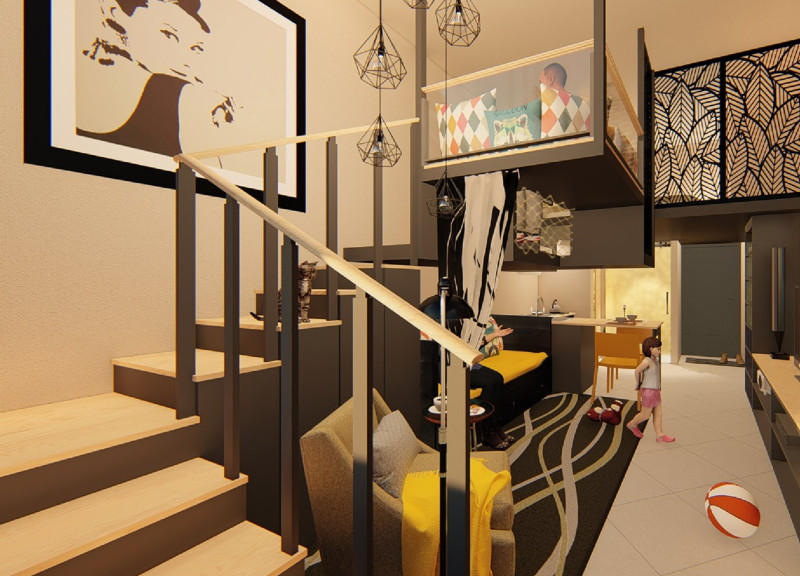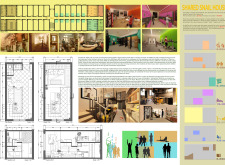5 key facts about this project
The "Shared Snail House" project addresses the changing needs of families living in urban China. Located in a densely populated area, it combines private and shared spaces to create a functional and welcoming environment. The design focuses on efficiency, allowing residents to enjoy both their own living areas and communal amenities.
Architectural Concept
Rooted in the history of dormitory-style housing common in China, each unit measures 7 meters in length, 3.2 meters in width, and 3.4 meters in height. With a net indoor area of 22.4 square meters and a volume of 76.16 cubic meters, the design utilizes vertical space to enhance the livability of compact dimensions. The layout prioritizes the relationship between dimensions, resulting in a thoughtful approach that makes urban living more practical.
Spatial Arrangement
The design includes private kitchens and bathrooms, ensuring that households have the independence they require. Shared spaces are thoughtfully integrated, featuring a minibar, laundry room, fitness area, and express delivery reception. These amenities encourage interaction and community among residents, creating a supportive atmosphere in a compact setting.
Adaptability and Functionality
Vertical space is effectively utilized, drawing on the characteristics of older buildings to accommodate various activities. Bedrooms are given sufficient space to foster close family bonds, particularly important for parents with young children. As families grow, the design allows for adjustments; for example, a sofa can transform into a separate sleeping space when needed.
Contemporary Needs
With more people working remotely, specific areas for study and work are included in the design. This ensures that residents can manage their professional lives alongside home responsibilities. Entertainment and gathering spaces are also part of the layout, supporting social interaction and meeting the lifestyle demands of families.
The communal dining area acts as a central gathering point. Its open design invites residents to come together, emphasizing the importance of community life in this living arrangement.



















































